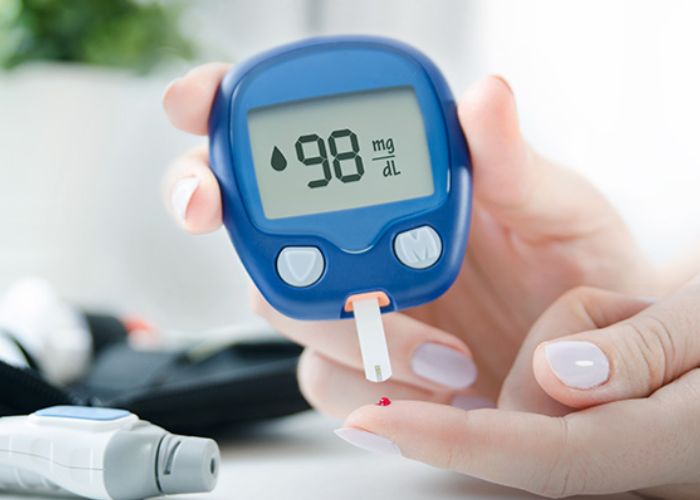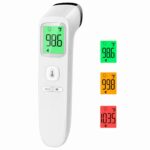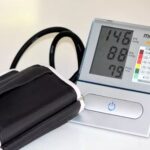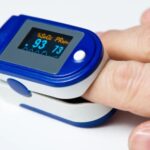As a diabetic for the past 7 years, I have extensive personal experience using various glucose meters to monitor my blood sugar levels on a daily basis. Keeping my blood glucose levels in check with my doctor’s recommended range has been essential to managing my health.
In this blog post, I will provide a first-hand look at how glucose meters work and how they are used by diabetes patients like myself to track our blood sugar. Let’s know about the “How Are Glucose Meters Used to Monitor Blood Sugar Levels?”
Table of Contents
What is a Glucose Meter?
A glucose meter is a small, portable electronic device used to measure the amount of glucose (sugar) present in your blood. Glucose meters can provide blood glucose readings in less than 5 seconds with just a small drop of blood.
As a Type 1 diabetic, I rely on my glucose meter multiple times per day. I use the OneTouch Verio Flex meter, which is one of the most popular and accurate options on the market. My meter connects wirelessly to my smartphone app, allowing me to track my blood sugar trends with helpful graphics.
How Do Glucose Meters Work?
Glucose meters measure the amount of glucose in the blood using a small test strip that the blood sample is placed on. The test strip contains chemicals that react with the glucose, generating a small electrical current. The strength of this electrical current allows the glucose meter to determine the amount of glucose present in the blood.
Most glucose meters today use an enzyme called glucose oxidase to react with the glucose and generate an electrical signal proportional to the blood sugar level. Many also use additional enzymes and mediators to improve accuracy. The entire reaction occurs in just a few seconds once the blood sample makes contact with the test strip chemicals.
When Should Blood Glucose Be Tested?
For diabetes patients, regular blood glucose testing is vital for keeping levels in check. Doctors recommend testing blood sugar levels multiple times throughout the day – especially before meals, before bed, before/after exercise, and whenever symptoms of high or low glucose are present.
As a Type 1 diabetic, my endocrinologist has me test my blood sugar 8-10 times per day to closely monitor my body’s insulin needs. This helps me calibrate my insulin pump settings for the best control. I test more often when trying a new meal plan or physical activity regimen.
Target Blood Glucose Ranges
According to rochester.edu, The target ranges for blood glucose levels vary based on each individual. For many non-diabetics, a normal fasting blood sugar is less than 100 mg/dL. For people with diabetes, target ranges tend to be 70-130 mg/dL before meals and under 180 mg/dL after the start of a meal.
My doctor recommends I maintain my blood glucose levels between 70-150 mg/dL for optimal health. This target range helps minimize my risks of diabetic complications from hyperglycemia while also avoiding dangerous hypoglycemia. I discuss my daily blood sugar trends at my quarterly diabetes reviews to make any needed medication adjustments.
Using Glucose Meter Results
For me, the key reason for regular glucose testing is being able to use the results to better control my blood sugar. By knowing my current glucose level and tracking how food, exercise, stress and other factors impact it, I can make more informed decisions about insulin dosing, diet and lifestyle. This helps keep my levels steadier.
Read More:- How Do Hydrocolloid Dressings and Silver Sulfadiazine Cream Aid in Wound Care?
I upload my glucose readings from my meter to the paired smartphone app. This allows me to monitor overall blood sugar trends and share reports easily with my doctor. Many apps also allow logging carb counts, activity, medication doses and notes to better understand what impacts your levels.
If my glucose is trending too high or too low consistently, I will adjust my insulin pump basal rates or carbohydrate ratio with my doctor. This can help optimize my blood sugar control.
Tips for Accurate Glucose Meter Testing
After 7 years of regular glucose testing, I’ve learned some best practices for accuracy:
- Wash hands before testing with warm, soapy water and dry thoroughly
- Use meter test strips before their expiration date
- Check that the meter code on the test strip vial matches your meter
- Follow the exact testing steps shown in your meter manual
- Discard used strips and lancets in a sharps container
It’s also important to know common factors that could skew glucose meter results like certain medications, dirty meter ports, improper coding, expired test strips and not following the test steps properly. Pay attention so you can catch any inconsistencies.
Read More:- How Do Nebulizers and Respiratory Masks Assist Patients with Respiratory Issues?
I recommend speaking with your doctor to determine how often you should test your blood sugar. Routine testing along with continuous glucose monitors can provide invaluable insight for better diabetes management.
As a long-time Type 1 diabetic, keeping up with blood glucose testing and tracking has been essential for maintaining control of my blood sugar. Glucose meters and apps make it simple to monitor my levels so I can respond appropriately and prevent hyper/hypoglycemic episodes. Being actively engaged has helped me minimize risks and live a full, active life with diabetes.
Consistent testing provides peace of mind knowing I’m doing all I can to manage my health. I hope you like reading “How Are Glucose Meters Used to Monitor Blood Sugar Levels?”

Dinesh Singh Negi is a seasoned expert in the healthcare procurement industry with over 15 years of experience in supply chain management and hospital procurement strategies. Holding a Master of Business Administration (MBA) in Operations Management and Supervision, Dinesh has successfully optimized procurement processes for numerous healthcare facilities, ensuring cost-effective and quality supply solutions. As the lead author on hospibuy.com, Dinesh shares his deep knowledge and insights on hospital procurement trends, product evaluations, and industry best practices. Connect with Dinesh on LinkedIn for more professional insights.











